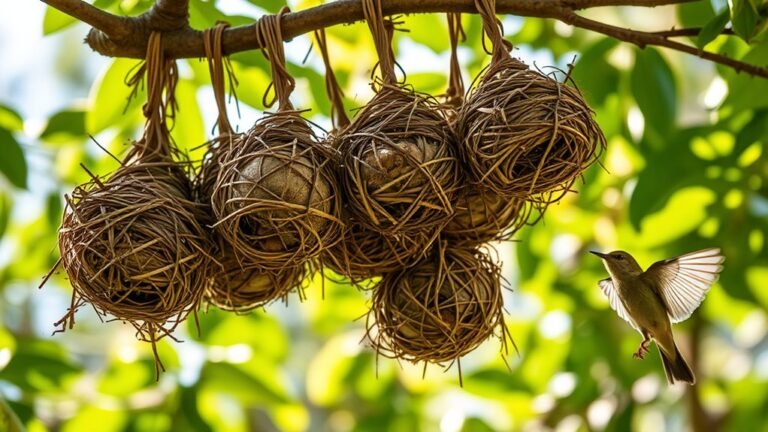What Do Bird Droppings Look Like? Signs of Avian Activity
Bird droppings are important markers of bird activity. They indicate the diet and habits of different bird species. The color, texture, and size of droppings vary among birds. For example, herbivorous birds often leave droppings with bright colors, while carnivorous birds usually produce darker and denser droppings. Recognizing these features helps us understand the types of birds in an area. Observing bird droppings can be an interesting way to learn more about local wildlife.
Key Takeaways
Bird droppings come in various colors, textures, and sizes based on the bird's diet and species. Herbivorous birds usually have larger and wetter droppings. In contrast, smaller and darker droppings are typical of carnivorous birds.
Different shapes and sizes of droppings can help identify specific bird species. The presence and quantity of droppings indicate active bird habitats nearby. Additionally, seasonal changes in droppings reflect dietary changes due to food availability.
Understanding bird droppings can be interesting and informative. Observing these signs can enhance your appreciation of local wildlife and their habits.
Understanding the Basics of Bird Droppings
Bird droppings provide clear signs of birds' presence and habits. Analyzing their composition can help identify the types of birds in your area. Different birds have unique droppings.
For example, pigeons, which are herbivores, leave behind larger and wetter droppings filled with plant matter. In contrast, carnivorous birds like hawks produce smaller, darker droppings with bone and feather fragments.
Common Characteristics of Bird Droppings
Bird droppings have three main characteristics: color, texture, and size. These features can change depending on the bird's habitat and diet. For example, birds that eat seeds and fruits often have bright, colorful droppings. In contrast, birds that feed on insects usually produce darker and more uniform droppings.
The texture of droppings can be wet and runny or dry and crumbly. This variation shows the bird's health and the moisture levels in the environment.
Size is also an important factor; larger birds, like eagles, leave bigger droppings than smaller birds, such as songbirds.
Identifying Bird Species Through Dropping Features
Observing bird droppings can help identify different species. By analyzing droppings, you can find key indicators that reveal information about birds.
- Look at the shape and size of the droppings.
- Notice the color and texture.
- Check for contents like seeds or fur.
- Observe where and how often the droppings appear.
- Consider the surrounding environment, whether it's urban or rural.
By recognizing these factors, you can determine which birds are in the area.
For example, round, white droppings with dark specks may come from pigeons, while large, elongated droppings might belong to raptors.
Each detail provides clues about the local bird community, helping you connect with nature.
Seasonal Variations in Bird Droppings
As seasons change, bird droppings change too. This change reflects what birds eat and their environment.
In spring and summer, droppings have varied textures and colors because birds eat many insects and fruits. The high protein from these foods makes the droppings darker and more liquid.
In fall and winter, food becomes harder to find. Droppings then look drier and more compact, often influenced by seeds and nuts instead of fresh fruits.
Weather affects visibility as well; rain can wash away droppings.
The Ecological Importance of Bird Droppings
Bird droppings are important for ecosystems. They act as a natural fertilizer that enriches soil and helps plants grow.
Here's how bird droppings make a positive impact:
- They increase soil fertility by providing nitrogen, phosphorus, and potassium.
- They support plant diversity, encouraging healthy growth.
- They maintain ecological balance by feeding various microorganisms.
- They create habitats for many organisms, including helpful insects.
- They contribute to the food web, as decomposing droppings serve as food for scavengers.
In summary, bird droppings play a vital role in sustaining the health of ecosystems and promoting biodiversity.
Their presence helps ensure that both soil and plants thrive, ultimately supporting a variety of life forms.
Tips for Observing and Collecting Bird Droppings
Observing and collecting bird droppings can provide insights into bird behavior and the health of your local environment. To begin, find areas with many birds, like feeding spots or nests.
Use plastic gloves and small bags to collect samples safely. Document each sample clearly by writing down the location, time, and type of bird. This information helps understand bird populations.
Take photos of the droppings to assist with identification later. Analyzing the droppings can show you what the birds eat and where they find food.
This knowledge can enhance your connection to nature. With practice, you'll gain a greater appreciation for birds and their habitats. Enjoy the process!
Frequently Asked Questions
Can Bird Droppings Be Harmful to Humans?
Yes, bird droppings can be harmful to humans. They can carry diseases that lead to respiratory problems. This risk is higher for vulnerable individuals. It is important to handle bird droppings carefully and keep areas clean. This practice helps maintain a safe environment.
How Do Bird Droppings Affect Plant Health?
Bird droppings benefit plants by adding nutrients like nitrogen and potassium to the soil. These nutrients help plants grow strong and healthy. However, too much bird waste can harm plants, leading to toxicity. It is essential to use bird droppings in moderation to support plant health without causing damage.
What Do Bird Droppings Smell Like?
Bird droppings can smell from slightly earthy to strongly unpleasant. This smell often includes ammonia, which suggests a high amount of nitrogen. This can affect nearby areas and may attract other animals.
How Long Do Bird Droppings Take to Decompose?
Bird droppings usually break down within weeks to months. The time it takes depends on temperature and moisture levels. These droppings can be good for soil as they act as fertilizer. However, if not managed, they can also cause water pollution. It is important to handle bird droppings properly to protect the environment.
Can Bird Droppings Indicate Nearby Bird Nests?
Yes, bird droppings can indicate the presence of nearby nests. These droppings often build up around nests. By examining the droppings, you can identify bird species. This process gives you insights into their behavior and helps you understand local bird populations better.

Ava is a bird enthusiast and nature lover who has spent countless hours observing and learning about the fascinating world of birds. With a passion for sharing her knowledge and inspiring others to appreciate the beauty of birds, Ava writes about her experiences and insights on avianadmirer.com.







